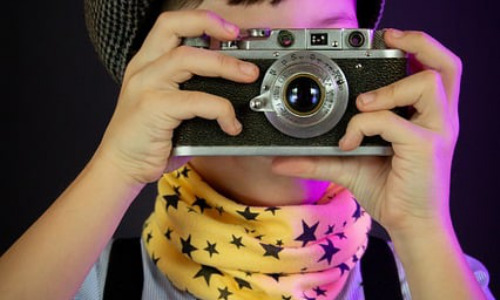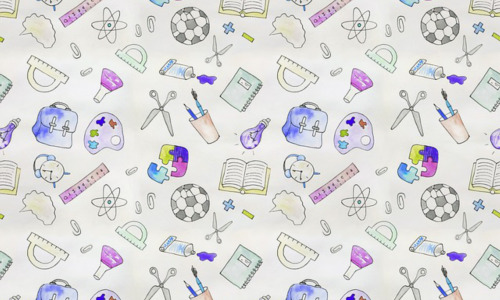如何保护眼睛六岁儿童英语
Six-year-olds are bursting with energy and curiosity, often spending hours engrossed in activities that can strain their developing eyes. Protecting their vision at this crucial stage is paramount for their future well-being and academic success. Unlike adults whose eyesight has largely matured, a six-year-old's eyes are still developing, making them more vulnerable to damage from excessive screen time, poor lighting, and inadequate eye care. This is why understanding and implementing effective eye protection strategies is vital. This article will explore practical, easy-to-follow tips for parents and caregivers to safeguard their child's vision, offering advice ranging from adjusting screen usage to ensuring proper lighting and regular eye examinations. We will examine the impact of various factors on a child's eyesight, providing clear and actionable steps to promote healthy vision habits from a young age. Remember, early intervention is key; identifying and addressing potential vision problems early can significantly reduce the risk of long-term eye health complications. This isn't just about preventing glasses; it's about ensuring your child has the best possible visual foundation for learning, playing, and experiencing the world.
 1. Limiting Screen Time: Excessive screen time is a significant contributor to eye strain and other vision problems in children. Six-year-olds are particularly susceptible due to their still-developing focusing muscles. The American Academy of Pediatrics recommends limiting screen time to one hour per day for children aged two to five. While six-year-olds are slightly older, this recommendation still serves as a valuable guideline. Encourage alternative activities like outdoor play, reading, drawing, and interactive games that don't involve screens. When screen time is unavoidable, ensure the device is held at a comfortable distance (about 18 inches) and that the brightness is adjusted to avoid glare. Regular breaks are crucial; every 20 minutes, encourage your child to look away from the screen and focus on a distant object for at least 20 seconds – this is often referred to as the 20-20-20 rule.
1. Limiting Screen Time: Excessive screen time is a significant contributor to eye strain and other vision problems in children. Six-year-olds are particularly susceptible due to their still-developing focusing muscles. The American Academy of Pediatrics recommends limiting screen time to one hour per day for children aged two to five. While six-year-olds are slightly older, this recommendation still serves as a valuable guideline. Encourage alternative activities like outdoor play, reading, drawing, and interactive games that don't involve screens. When screen time is unavoidable, ensure the device is held at a comfortable distance (about 18 inches) and that the brightness is adjusted to avoid glare. Regular breaks are crucial; every 20 minutes, encourage your child to look away from the screen and focus on a distant object for at least 20 seconds – this is often referred to as the 20-20-20 rule.
2. Ensuring Adequate Lighting: Good lighting is essential for comfortable and clear vision. When reading, studying, or engaging in any close-up activity, ensure the area is well-lit with natural light whenever possible. Avoid harsh, direct light sources that can cause glare and strain the eyes. A soft, diffused light is ideal, such as that from a desk lamp with a warm-toned bulb. When using screens, avoid positioning them directly in front of windows or bright light sources.

3. Maintaining a Healthy Diet: Nutrition plays a vital role in eye health. A balanced diet rich in fruits, vegetables, and omega-3 fatty acids is crucial for supporting eye development and preventing age-related macular degeneration later in life. Foods rich in lutein and zeaxanthin, such as spinach, kale, and eggs, are particularly beneficial for eye health. Limit sugary drinks and processed foods, as they can negatively impact overall health, including eye health.
4. Regular Eye Examinations: Early detection is key to addressing any potential vision problems. Schedule regular comprehensive eye examinations for your six-year-old. Many experts recommend a first eye exam around age three, and subsequent exams should be scheduled as recommended by your ophthalmologist or optometrist. Early detection of refractive errors like nearsightedness (myopia), farsightedness (hyperopia), and astigmatism is crucial, as these can impact a child's learning and development if left untreated.
5. Protecting Eyes from Sun Exposure: Just like protecting skin from the sun, protecting eyes from harmful UV rays is crucial. Encourage your child to wear sunglasses that offer 99-100% UVA and UVB protection, especially during outdoor activities. This will help prevent the development of cataracts and other sun-related eye problems later in life.
6. Good Hygiene Practices: Teach your child the importance of handwashing to prevent the spread of germs that could lead to eye infections. Avoid rubbing their eyes excessively, as this can damage the delicate eye tissues. If your child experiences any redness, swelling, or discharge from their eyes, consult a doctor immediately.
7. Promoting Good Posture: Slouching while reading or using screens can strain the neck and eyes. Encourage your child to sit upright with their back straight and their eyes at a comfortable distance from the screen or book.
8. Encouraging Regular Breaks: Even with good lighting and posture, frequent breaks are essential. Regularly encourage your child to look away from close-up activities and focus on distant objects. This helps to relax the eye muscles and reduce strain. Incorporate regular physical activity and outdoor play to further reduce eye strain.

Implementing these simple yet effective strategies can make a significant difference in protecting your six-year-old's eyesight. Remember that a proactive approach to eye care is vital for ensuring your child enjoys healthy vision throughout their life. By establishing these healthy habits early, you’re investing in their future well-being and academic success. Consistent monitoring and attention to their eye health will pay off in the long run.
Understanding Myopia in Six-Year-Olds
Myopia, or nearsightedness, is a common refractive error that affects children, and its onset can occur as early as age six. Understanding the factors contributing to myopia and the strategies for its management is crucial for parents and caregivers. Myopia occurs when the eyeball is elongated, causing light rays to focus in front of the retina instead of directly on it, resulting in blurry distance vision. While genetics play a role, environmental factors are increasingly recognized as significant contributors to the rise in myopia prevalence.
Risk Factors for Myopia:
- Genetics: A family history of myopia significantly increases a child's risk.
- Excessive Near Work: Prolonged near-work activities like reading, writing, and using digital devices without sufficient breaks are strongly linked to myopia development.
- Limited Time Outdoors: Studies show a strong correlation between less time spent outdoors and an increased risk of myopia. The theory is that increased exposure to natural light may have a protective effect.
- Lack of Vitamin D: Some research suggests a link between vitamin D deficiency and myopia.
- Early Age of Schooling: Children starting formal schooling at a younger age may also have a higher risk.
Management and Prevention Strategies:
- Increase Outdoor Time: Encourage at least two hours of outdoor time per day. Sunlight exposure is believed to play a protective role, although the exact mechanism is still under investigation.
- Reduce Near Work: Implement strategies to limit near work activities, such as taking frequent breaks during reading or screen time, following the 20-20-20 rule.
- Regular Eye Exams: Regular comprehensive eye exams are crucial for early detection and management of myopia.
- Myopia Control Strategies: If myopia is detected, your ophthalmologist may recommend specific myopia control strategies such as atropine eye drops or special contact lenses designed to slow myopia progression.
- Healthy Diet: Maintain a healthy diet rich in fruits, vegetables, and omega-3 fatty acids, supporting overall eye health.
- Proper Lighting: Ensure adequate lighting for near-work activities to reduce eye strain.
- Ergonomics: Encourage good posture and proper viewing distances when engaged in near-work tasks.
It's important to remember that myopia management is an ongoing process. Regular monitoring and adherence to recommended strategies are essential to mitigate the progression of myopia and minimize its potential long-term effects on vision. Early intervention and proactive management can significantly improve a child's visual health and quality of life. If you have any concerns about your child's vision, consult an ophthalmologist or optometrist for a comprehensive evaluation. They can provide personalized advice and recommendations based on your child's specific needs.


评论